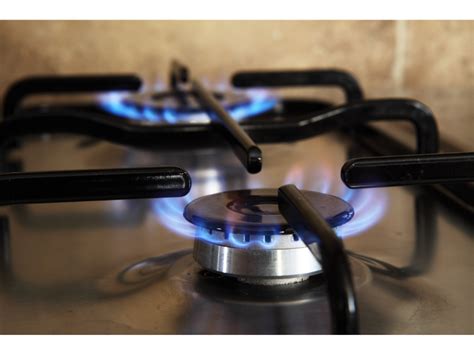How To Tell If Your Gas Stove Is Leaking
Ronan Farrow
Mar 20, 2025 · 3 min read

Table of Contents
How to Tell if Your Gas Stove is Leaking
A gas stove leak is a serious issue that needs immediate attention. Ignoring a leak can lead to gas poisoning, explosions, and fires. Knowing how to detect a leak early is crucial for your safety and the safety of your family. This guide will walk you through several methods to help you identify a potential gas leak from your stove.
Visual Inspection: The First Line of Defense
Before employing more advanced methods, start with a thorough visual inspection.
Look for Obvious Signs:
- Visible Damage: Examine the gas lines, connectors, and the stove itself for any signs of damage, cracks, or corrosion. Pay close attention to areas where the gas line connects to the stove and any visible piping.
- Soot or Staining: Black soot or staining around the burners or the gas line can indicate a leak and incomplete combustion. This is a strong indicator requiring immediate action.
- Loose Connections: Check if any connections seem loose or if there are any gaps between the gas line and the stove. A loose connection is a potential pathway for gas to escape.
The Soap Suds Test: A Simple and Effective Method
This is a widely used and reliable method to detect gas leaks.
What You'll Need:
- A spray bottle: Filled with a solution of warm water and dish soap (avoid using harsh detergents). A soapy mixture creates bubbles that will expand noticeably in the presence of escaping gas.
- A soft cloth or sponge: To apply the soapy solution.
How to Perform the Test:
- Turn off the gas supply: Locate the main gas valve to your stove and turn it off completely. This is a crucial safety step before proceeding.
- Apply the soapy solution: Carefully apply the soapy water to all connections, gas lines, and any potentially vulnerable areas of the stove.
- Observe for bubbles: If a leak is present, you will see bubbles forming and expanding at the point of the leak. The larger and faster the bubbles, the more significant the leak.
The Smell Test: Relying on Your Senses (But Not Solely!)
Natural gas often contains a strong-smelling additive called mercaptan, which is designed to alert you to leaks. However, do not rely solely on smell. Gas leaks can sometimes be odorless, especially if the additive has faded or the leak is small.
What to Do:
- Check your nose: Carefully sniff around the stove and gas lines. If you detect a strong sulfurous or rotten egg smell, it's a strong indication of a gas leak.
- Evacuate and call for help immediately: If you suspect a gas leak, immediately evacuate your home and contact your gas company or emergency services.
When to Call a Professional
If you detect any signs of a gas leak, do not attempt to repair it yourself. Gas leaks are dangerous and require professional attention. Contact your gas company or a qualified gas appliance technician immediately.
Key takeaway: Regularly inspect your gas stove for leaks to prevent potential hazards. Remember, your safety and the safety of your loved ones should always come first.
Featured Posts
Also read the following articles
| Article Title | Date |
|---|---|
| Howa 1500 Vs Ruger American | Mar 20, 2025 |
| Kate Hudson Dress How To Lose A Guy | Mar 20, 2025 |
| How Can I Join The Black Panther Party | Mar 20, 2025 |
| How Big Is 350 Ml Bottle | Mar 20, 2025 |
| How Does Getting Married Affect Child Support In New York | Mar 20, 2025 |
Latest Posts
Thank you for visiting our website which covers about How To Tell If Your Gas Stove Is Leaking . We hope the information provided has been useful to you. Feel free to contact us if you have any questions or need further assistance. See you next time and don't miss to bookmark.
